Take Flight From Lawn Pesticides: Tips for Organic, Bird-Friendly Gardening
Around 1 billion pounds of conventional pesticides are sprayed and scattered each year in the United States, applied to everything from the food we eat, to the grass we walk on, to the plants in our gardens. Although invisible, many of these chemicals remain in soil and water for months or years, killing far more than just the garden pests we hope to eliminate.
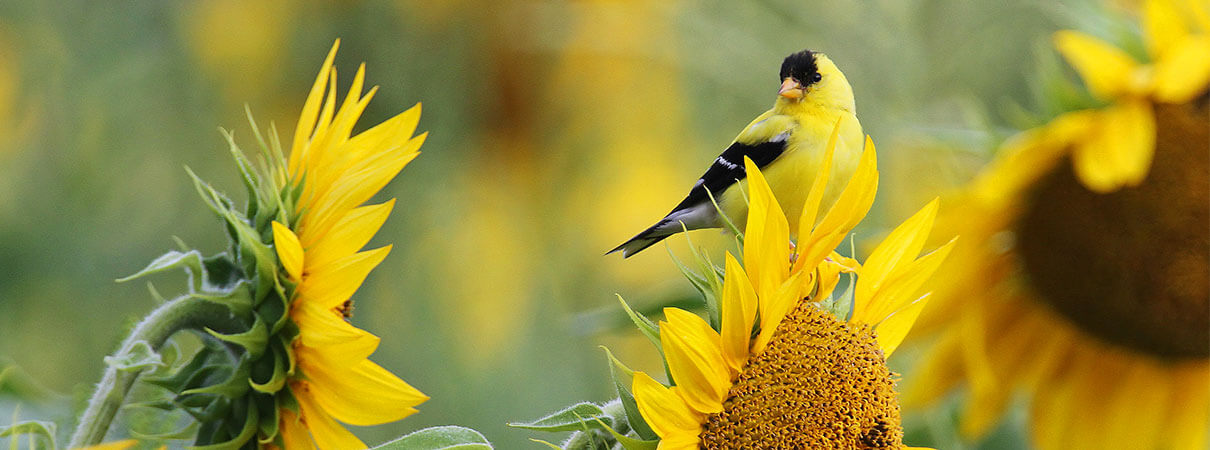
The impacts are staggering. Apart from the potential harm to humans and domesticated animals, as many as 67 million wild birds may be killed every year by pesticides in the U. S., though pinpointing the exact number is difficult.
This poses a challenge for gardeners who want bountiful harvests and beautiful flowers without the harm caused by toxic pesticides. The good news is that it can be done. Keep reading to learn more about the impact of lawn pesticides on birds, how these chemicals are regulated, and how you can keep weeds at bay while maintaining a healthy, bird-friendly garden.
How Do Pesticides Affect Birds?
For starters, let's talk about what a pesticide is. Pesticides includes insecticides, herbicides, fungicides, rodenticides, acaricides, and any other “-cide” you can think of. If the intent of a product is to eliminate a pest or plant disease, it's a pesticide. This includes a wide range of products, ranging from the more bird-friendly organics to the most broad and ruthless synthetics.
Pesticide chemicals may impact birds by:
· poisoning birds when granules or coated berries and seeds are ingested;
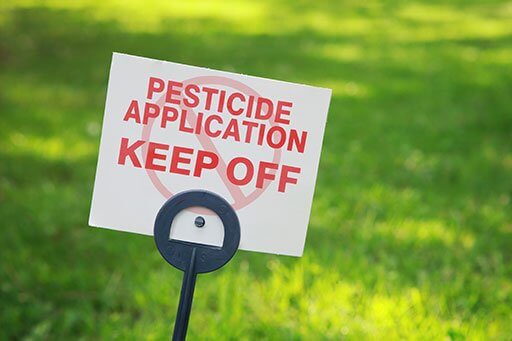
· killing insects and other invertebrates crucial to birds and their young;
· eliminating plants necessary to bird survival;
· bioaccumulating in fish, mammals, and other prey, which may then pass into raptors;
· thinning eggshells and reducing chick weight;
· and suppressing immune systems and inhibiting movement.
That's not all. Pesticides have long-term impacts that can affect birds and other wildlife well into the future. If such effects kill birds in a place over a sustained time period, these deaths could suppress localized populations for years to come.
Bird aren't the only victims of dangerous pesticides. People who work closely with these chemicals, such as farmworkers and applicators, are subject to a number of health-adverse effects, ranging from rashes to neurological damage.
Who Regulates Pesticides?
All pesticides in the United States, agricultural and otherwise, are registered through the Environmental Protection Agency (EPA) and governed by the Federal Insecticide, Fungicide, and Rodenticide Act (FIFRA) of 1947. FIFRA has been amended multiple times over the years to adapt to the changing toxicological landscape.
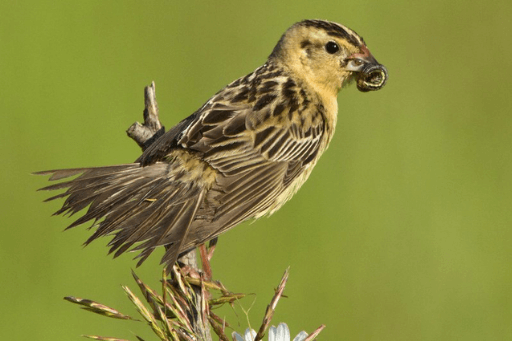
For instance, if a chemical company applies to register a new herbicide, the EPA can ask the company to examine the potential links between lawn pesticides and birds. This involves answering a series of important questions. Will it adversely affect birds? Will it adversely affect other, non-target organisms? What impact will it have if leached into streams or rivers?
Sadly, the answers to these questions often are skirted, overlooked, or inadequate. When this happens, dangerous chemicals that negatively impact birds, other wildlife, and humans can end up on store shelves.
ABC is working to ensure the EPA protects birds and people by closing regulatory loopholes, calling for more stringent testing, and canceling the registration of some of the most harmful pesticides in use. You can help protect birds by visiting our action center and telling Congress to restrict the use of dangerous pesticides.
Pesticides to Avoid
At ABC, we recommend against using toxic pesticides due to dangers they pose to birds and the larger environment. This includes the following commonly used lawn chemicals:
Neonicotinoids — More commonly known as “neonics,” this group of widely used systemic insecticides includes such active ingredients as imidacloprid, clothianidin, thiamethoxam, and dinotefuran. Neonics inhibit muscle contraction in garden pests, but also a wide range of other invertebrates, including pollinators. Their high water solubility and long half-lives mean they can remain in groundwater, ponds, lakes, and streams for long periods of time. Making matters worse, neonics can be lethal to birds if ingested, even in small quantities.
Glyphosate — Glyphosate is an organophosphorus herbicide common in home applications. Glyphosate leaches into groundwater and finds its way to streams and ponds where it is highly toxic to aquatic invertebrates. Birds rely heavily on aquatic invertebrates such as caddisflies and mayflies, especially when rearing chicks.

Carbaryl — A member of the carbamate family of insecticides, carbaryl has been shown to have severely adverse effects on human health. Carbaryl is a commonly identified agent of harm when it comes to lawn pesticides and birds. Despite this, it is commonly employed on lawns and green spaces across the country.
Avoid systemic insecticides: These insecticides can lodge within a plant's physical structure, permeating everything from the stem and leaves to pollen, nectar, and fruits. The neonicotinoid imidacloprid, for instance, is often used as a seed coating; once the plant sprouts and begins growing, it absorbs the imidacloprid and incorporates it as it develops.
Alternative Ways to Help Your Garden
Synthetic pesticides can be dangerous to human health and harmful to the very plants and animals gardeners are trying to support and attract. We recommend using non-chemical means to control pests in your garden. Check our bird-safe tips below.
Weed by Hand — Removing weeds by hand allows gardeners to avoid harsh chemicals while also closely observing the progress of their plants. A regimen of early and persistent weeding can reap benefits, while feeding the compost pile, which, in turn, provides rich organic matter (natural fertilizer) for future plantings.
Use DIY Pesticides — A mixture of diluted white vinegar, salt, and dish soap can be a fantastic way to rid your garden of weeds without synthetic chemicals. Lawn Love has a recipe available here.
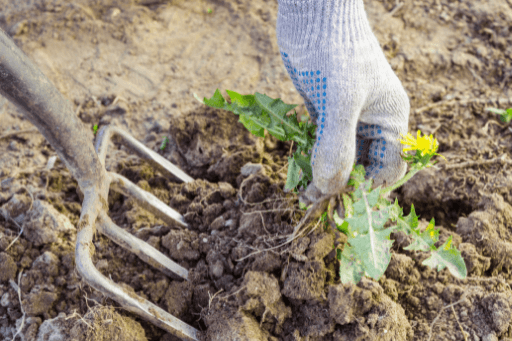
Prevent Weeds with Corn Gluten — Sprinkling corn gluten, a natural corn byproduct, on a garden can suppress the future growth of weeds without harming larger, established plants.
Get Rid of Weeds on Pavement with Boiling Water — To eliminate dandelions and other weeds growing between cracks in concrete, simply douse them with boiling water! Take extra care to avoid drips, spills, and burns.
Try Organic Insecticides and Lawncare Companies — When natural biological controls need a bit of a boost, consider using essential-oil-derived insecticides, such as those by Jonathan Green.
Invest in Native Plants — Make your yard or green area into a bird-friendly space by planting native species that attract and support birds. You can find pollinator-friendly native plants adapted to your region with this fantastic guide from the Xerces Invertebrate Conservation Society.
Birds in Trouble
Lawn pesticides aren't the only threats birds face.
In less than a single human lifetime, 2.9 billion breeding adult birds have been lost from the United States and Canada, across every ecosystem. This includes familiar birds: The Dark-eyed Junco has lost an incredible 175 million individuals from its population. The White-throated Sparrow has lost 93 million.
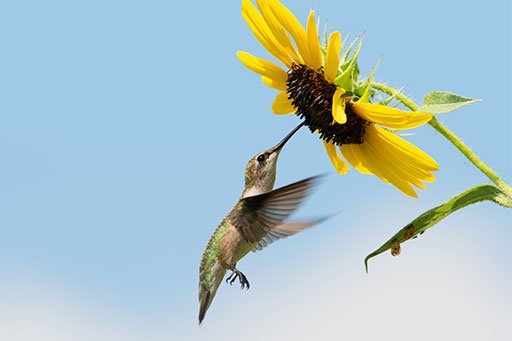
Scientists have identified habitat loss as the biggest overall driver of bird declines. Habitat degradation is a second cause of losses. In this case, habitat doesn't disappear outright but becomes less able to support birds, such as when habitat is fragmented or altered by invasive plants, or when water quality is compromised.
Aside from habitat loss and degradation, other major human-caused threats to birds come from cats and other invasive species and collisions with glass and industrial infrastructure, such as communications towers and wind turbines.
Climate change exacerbates these threats, and also creates new challenges, for example, by changing habitat distributions and shifting the timing of peak food supplies for birds.
How You Can Help Birds
We all can do our part to protect birds.
American Bird Conservancy and our Joint Venture partners have improved conservation management on 6.4 million acres of U.S. bird habitat — an area larger than the state of Maryland — over the last ten years. This is a monumental undertaking, requiring the support of many, and you can help by making a gift today.
Policies enacted by Congress and federal agencies, such as the U.S. Fish and Wildlife Service, have a huge impact on America's birds. You can help shape these rules for the better by telling lawmakers to prioritize birds, bird habitat, and bird-friendly measures. To get started, visit ABC's Action Center.
Finally, don't overlook the impact you can have at home. Living a bird-friendly life can have an immediate impact on the birds around you. To learn more, visit our Bird-Friendly Life page.
 | Hardy Kern is ABC's Director of Government Relations, Birds and Pesticides Campaign. |


















































